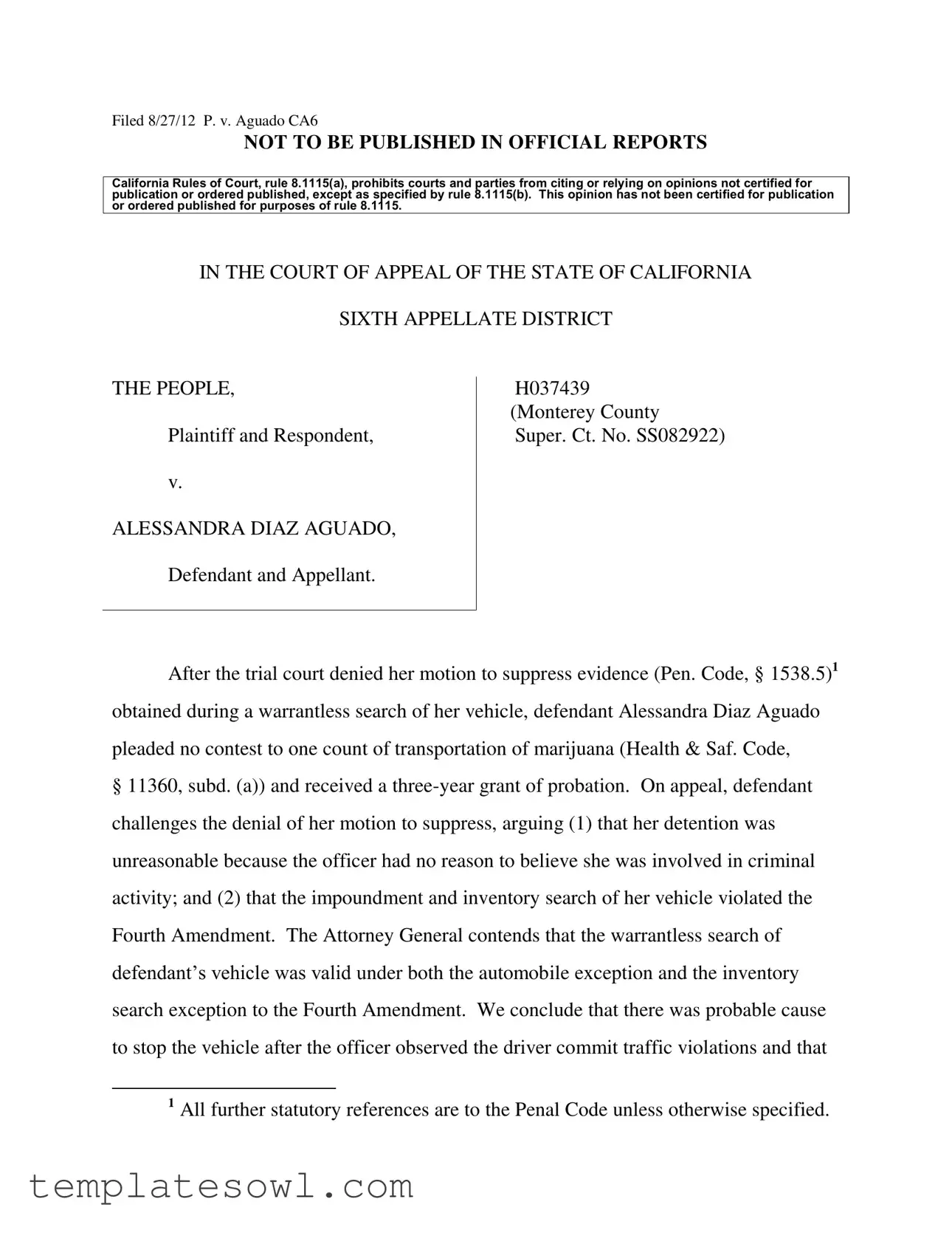Automobile Exception
The automobile exception permits searches for evidence relevant to offenses other than the offense of arrest. (Gant, supra, 556 U.S. at p. 347.) It is rooted in “the historical distinctions between the search of an automobile or other conveyance and the search of a dwelling.” (People v. Superior Court (Nasmeh) (2007) 151 Cal.App.4th 85, 100.) These distinctions recognize a vehicle‟s inherent mobility (ibid.; California v. Carney (1985)
471 U.S. 386, 394, fn. 3) and acknowledge a reduced expectation of privacy in a vehicle compared to a dwelling. (Gant, supra, at p. 345.) “[A]n individual‟s expectation of privacy in a vehicle and its contents may not survive if probable cause is given to believe that the vehicle is transporting contraband.” (Ross, supra, 456 U.S. at p. 823.)
“In this class of cases, a search is not unreasonable if based on facts that would justify the issuance of a warrant, even though a warrant has not actually been obtained.” (Ross, supra, 456 U.S. at p. 809, fn. omitted.) This threshold standard means “ „a fair probability that contraband or evidence of a crime will be found,‟ [citation]. . . .”
(Alabama v. White (1990) 496 U.S. 325, 330.) Probable cause to search thus exists
“where the known facts and circumstances are sufficient to warrant a [person] of
reasonable prudence in the belief that contraband or evidence of a crime will be found,
see [citations].” (Ornelas v. United States (1996) 517 U.S. 690, 696.) Said another way,
“[p]robable cause for a search exists where an officer is aware of facts that would lead a
[person] of ordinary caution or prudence to believe, and conscientiously to entertain, a
strong suspicion that the object of the search is in the particular place to be searched.”
(People v. Dumas (1973) 9 Cal.3d 871, 885.)
Under the automobile exception, “If there is probable cause to believe a vehicle
contains evidence of criminal activity, United States v. Ross . . . authorizes a search of
any area of the vehicle in which the evidence might be found.” (Gant, supra, 556 U.S. at
p. 347, citing Ross, supra, 456 U.S. at pp. 820-821.) This means the search may extend
to “every part of the vehicle and its contents that may conceal the object of the search.”




